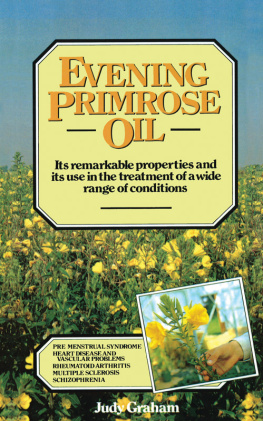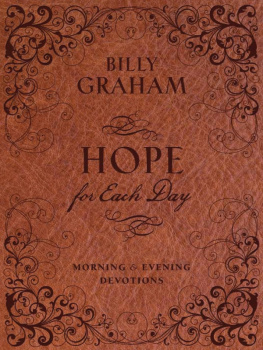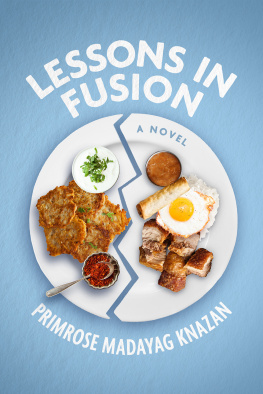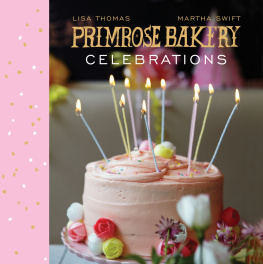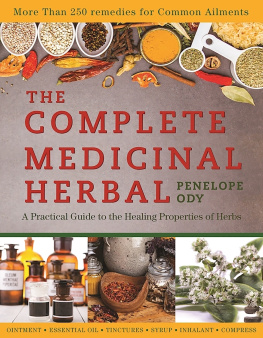Evening Primrose Oil
by
JUDY GRAHAM

This book is dedicated to the doctors who are working to solve the many diseases of civilization.
Only connect.
E.M. Forster
The Evening Primrose
by John Clare
When once the sun shrinks in the west,
And dew-drops pearl the evenings breast;
Almost as pale as moonbeams are,
Or its companiable star,
The evening primrose opens anew
Its delicate blossoms to the dew
And, hermit-like, shunning the light,
Wastes its fair bloom upon the night;
Who, blind-fold to its fond caresses,
Knows not the beauty he possesses.
Thus it blooms on while night is by;
When day looks out with open eye,
bashed at the gaze it cannot shun,
It faints and withers and is gone.
ACKNOWLEDGEMENTS
My thanks are due to the many doctors who have done the research work on evening primrose oil. I have freely quoted from their papers in order to keep as closely as possible to their own accounts of their findings. The references for each of these papers can be found at the back of the book.
My acknowledgements to Dr Hugh Carmichael, consultant physician, Vale of Leven District General Hospital, Dunbartonshire; Dr John Rotrosen, assistant professor of psychiatry, New York University School of Medicine; Professor Robert Zurier, Chief, Rheumatology Section, University of Pennsylvania School of Medicine; Dr Paul Preece, consultant surgeon, Ninewells Hospital, Dundee; Dr Michael Brush, Department of Gynaecology, St Thomas Hospital, London; Drs Steven Wright and John Burton, Department of Dermatology, Bristol Royal Infirmary, Bristol; Dr Allan Campbell, consultant physician, Hairmyres Hospital, East Kilbride; Dr G.C. MacEwan, consultant opthalmologist, Gartnevel General Hospital, Glasgow; Dr M.A. Mir, consultant physician, University Hospital of Wales, Cardiff; Dr K.S. Vaddadi, consultant physician, Bootham Park Hospital, York; Dr I. Glen, consultant psychiatrist, Craig Dunain Hospital, Inverness.
I would also like to thank Valerie Grundon, Howard Thomas, Peter Lapinskas, David Dow, Leslie Smith and John Williams for their special help.
Particular thanks are due to Dr David F. Horrobin, Director of the Efamol Institute in Nova Scotia, Canada, and to his co-workers. And I owe a personal thankyou to Dr Michel Odent for his support and encouragement while I was writing the book.
PREFACE
It might seem very odd that someone who is neither a scientist nor a botanist should be writing a book about evening primrose oil. I even find it quite surprising myself that I have got so involved in this bizarre little plant and its possibilities.
My own involvement with evening primrose oil goes back to the early 1970s. It was then that I began taking it (for multiple sclerosis) and have carried on ever since.
In my book Multiple SclerosisA Self Help Guide to Its Management (Thorsons, 1981) I devoted a whole chapter to evening primrose oil, and this book came to be written as a development of that chapter.
I also became fascinated by all the marvellous possibilites of evening primrose oil, and followed the various scientific studies with great interest.
Even though I take the oil myself, this book has been written with the objectivity required of any journalist. I am simply reporting the facts and letting them speak for themselves.
INTRODUCTION
The story of the evening primrose could turn out to be one of the most fantastic in plant and medical history. Like foxglove (digitalis), cinchona bark (quinine) and rauwolfia (reserpine) before it, the evening primrose promises to take its place in the hall of fame of plants with important medicinal properties. But unlike these other natural products which are, on the whole, useful for only one condition, the oil of the evening primrose has properties which make it useful for a very wide range of illnesses.
A sceptic might think hed strayed into a Victorian fairgound where some charlatan was selling strange mixtures promising to cure everything from gout to hiccups with one gulp. And, on the face of it, the claims made for evening primrose oil do seem quite fantastic. After all, how can the same unassuming little plant be used in the treatment of benign breast disease and brittle nails and faulty blood vessels, and a score of other ailments?
The answer is that the mechanism for each of these conditions is similar. Put simply, the oil of the evening primrose converts, in the body, to a physiologically-active substance called Prostaglandin El (PGE1), which is the real hero of the piece. Its the PGE1 which is doing much of the good work in each case, although making prostaglandins is not the only talent of the oilits fatty acid provides for cell membrane growth as well.
The unique quality of evening primrose oil is that it contains a substance called gammalinolenic acid (GLA), and it is this which eventually converts in the body to PGE1 (see page 26). The evening primrose is the only plant to have this vital ingredient with no toxic properties, though the sea alga, spirulina, does also contain gammalinolenic acid. So does borage, anchusa, rose bay willow herb, comfrey and some mosses, but none of these is readily available for human consumption. Human breast milk, which has countless nutrients essential for a baby, also contains GLA. But now evening primrose oil is being called mothers milk for adults.
Evening primrose oil capsules are now being sold over the counter in health food shops and chemists as a dietary supplement of essential fatty acids. But at universities and hospitals in England, Scotland, Wales, the U.S.A., Canada, Australia and South Africa, strictly controlled research trials are underway to put evening primrose oil to the test. It is virtually unheard of for a health food product to be submitted to such stringent scientific study, which gives you some indication of the importance of the evening primrose.
By the time you read this book, evening primrose oil may well have the status of a pharmaceutical and be available on prescription in Britain on the National Health Service, for one or more of the conditions listed in this book. When this happens, it will be one of the few pharmaceuticals available which are not made from synthetic chemicals, but from entirely natural products.
1. WHAT IS THE EVENING PRIMROSE?
Most people have never heard of the evening primrose, and not surprisingly. Its not a well known plant, and certainly not one youre likely to grow in your back garden, although it is rather a pretty botanical specimen. Mostly it grows wild along roadsides, railway sidings and on waste sites, and it thrives in places such as sand dunes.
Strictly speaking, the evening primrose is not a primrose at all. Its not even related to the primrose family. It belongs to the willow herb family, and in its wild state is more a weed than a plant.
It has acquired its name because its bright yellow flowers resemble the colour of real primroses, and because its flowers open in the evening. The flower usually lasts for the whole of the next day, particularly in dull weather, but in bright sunlight the flowers fade quite quickly. In England, the plant flowers from the end of June to mid August.
Experts who classify plants (taxonomists) will tell you that the evening primrose belongs to the order Myrtiflorae, family Onagraceae, genus Oenotherae. The generic name comes from the Greek oinos (wine) and thera (hunt). According to herbals, this described a plantprobably a willow herbwhich gave one a relish for wine if the roots were eaten. Another interpretation is that the plant dispelled the ill effects of wine, and this fits in better with modern research (see ).
Next page
